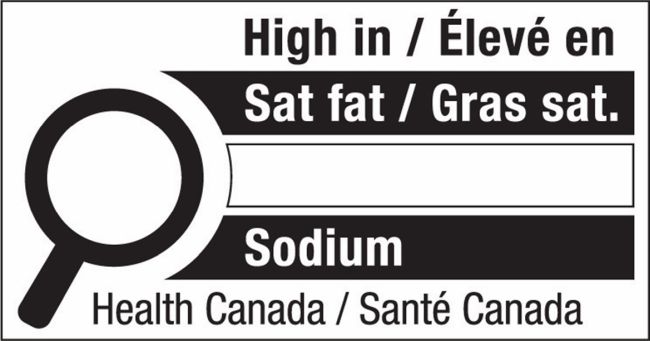Sugar, sodium and saturated fats are in Health Canada's crosshairs, as the Minister of Health announced new food labelling requirements set to come into force on July 20, 2022 (although the food industry has until January 1, 2026 to implement the required changes to labels). Prepackaged foods that exceed certain thresholds of these nutrients will have to display a magnifying glass symbol on the front of the package, drawing consumers' attention to elevated levels of these nutrients.
Thresholds at which warning labels are required
Whether front-of-packaging labelling is required depends on the food's "reference amount", that is, the quantity typically consumed in one sitting. As a general rule, prepackaged foods that contain at least 15% of the recommended daily value ("DV") of these nutrients must be labelled accordingly. However, if the reference amount is low (meaning the food is typically consumed in small quantities), the threshold is at least 10% of the DV. Conversely, if the prepackaged food is a main dish, the nutrient must meet or exceed 30% of the DV before a front-of-package label is required. In any case, the following is an example of the required labelling applied to a product with saturated fat and sodium content meeting or exceeding the threshold level:

Exemptions
Exceptionally, certain foods that surpass these thresholds may be exempt from the new labelling requirements, either for health-related, technical or practical reasons. Health-related exemptions include foods with recognized health benefits (e.g. fruits and vegetables, whether fresh, frozen, canned or dried), and foods that are sources of shortfall nutrients (e.g. dairy products, as calcium is a shortfall nutrient). Technical exemptions may apply, for example, to certain foods that do not require a nutrition facts table, and practical exemptions may apply where the food is essentially composed of the nutrient in question, e.g. sugar, salt and oils.
Rationale
The new labelling requirements aim to allow Canadians to make informed choices about foods containing the nutrients of concern. Indeed, Health Canada's backgrounder on the requirements expressly refers to the increased risk of heart disease, and type 2 diabetes associated with these nutrients, and cites a similar initiative in Chile that resulted in significantly lower consumption of sugar and sodium.
The Fasken food law team has extensive experience advising on food labelling matters and is available to advise on the upcoming changes. See: News Release: Government of Canada unveils new front-of-package nutrition symbol; Backgrounder: Front-of-package nutrition labelling; Regulations Amending the Food and Drug Regulations (Nutrition Symbols, Other Labelling Provisions, Vitamin D and Hydrogenated Fats or Oils): SOR/2022-168
The content of this article is intended to provide a general guide to the subject matter. Specialist advice should be sought about your specific circumstances.




